
Fernando Blanco
@fernandoblancos.bsky.social
Paleobiologist studying the evolution of ancient ecosystems/Postdoc researcher at Estación Biológica de Doñana/Tocateclas
A new chapter begins! Starting this September, I’ll be working on bird macroevolution at @ebdonana.bsky.social . Excited for this new adventure and the amazing research ahead 🐦🐤🪶
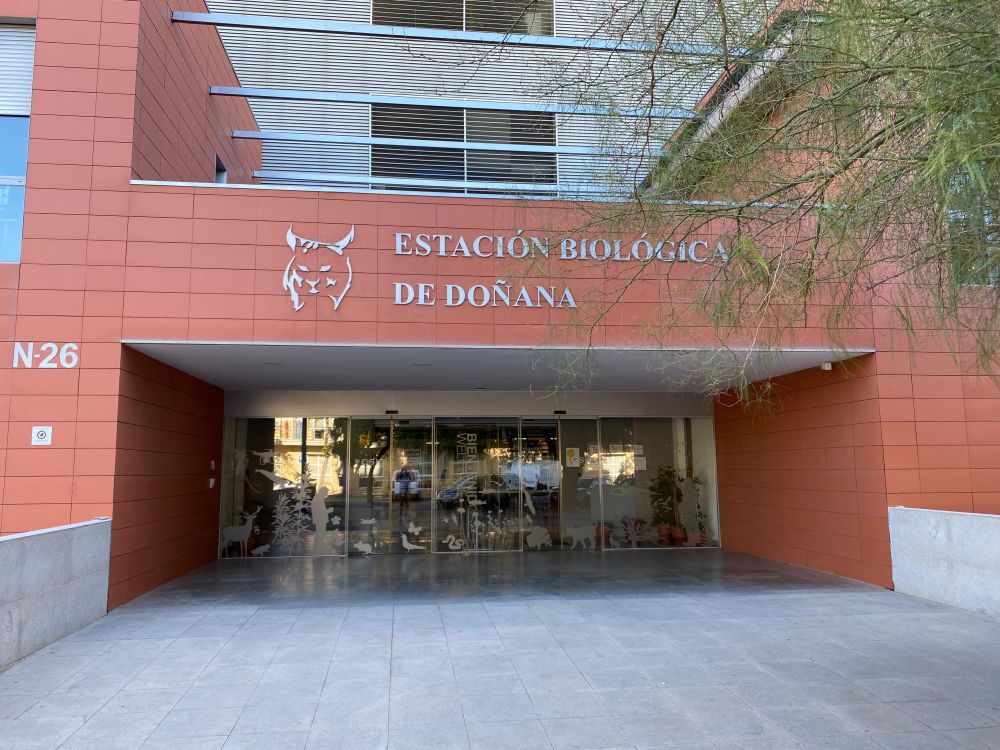
August 28, 2025 at 10:12 AM
A new chapter begins! Starting this September, I’ll be working on bird macroevolution at @ebdonana.bsky.social . Excited for this new adventure and the amazing research ahead 🐦🐤🪶
🚨 I'm looking for #Postdoc opportunities starting this September! 🧑🔬🔍
I'm a highly motivated researcher with experience in R, network analysis, and multivariate statistics. My focus is on the evolution of ecosystems and biodiversity over deep time.
I'm a highly motivated researcher with experience in R, network analysis, and multivariate statistics. My focus is on the evolution of ecosystems and biodiversity over deep time.
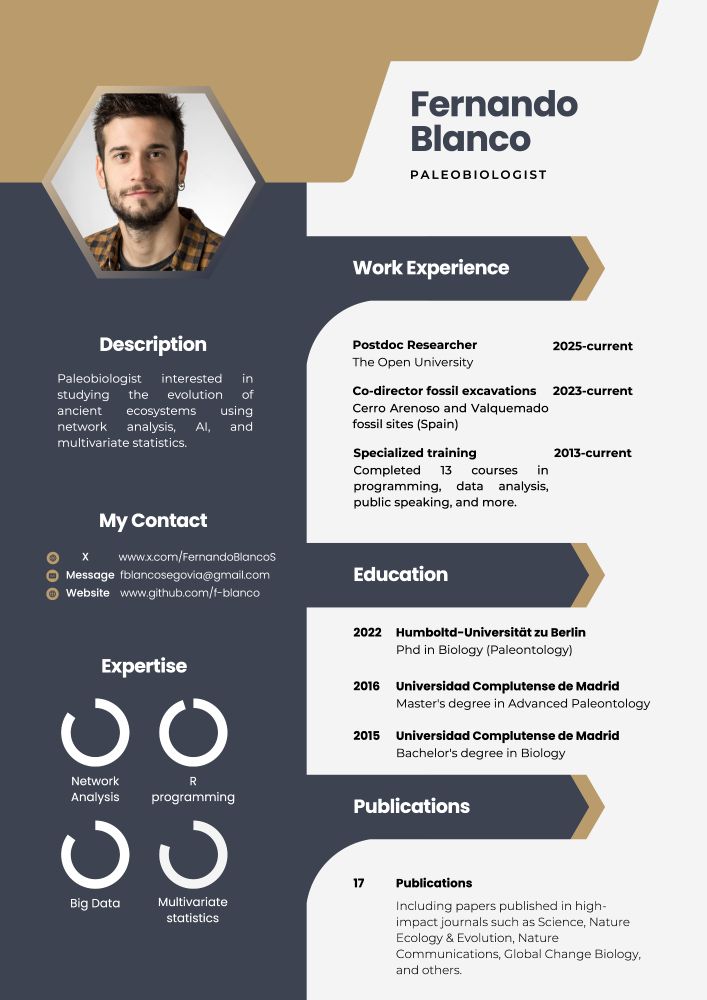
June 13, 2025 at 8:24 AM
🚨 I'm looking for #Postdoc opportunities starting this September! 🧑🔬🔍
I'm a highly motivated researcher with experience in R, network analysis, and multivariate statistics. My focus is on the evolution of ecosystems and biodiversity over deep time.
I'm a highly motivated researcher with experience in R, network analysis, and multivariate statistics. My focus is on the evolution of ecosystems and biodiversity over deep time.
9/ This paper is the result of over 7 years of work—a true collective effort. Huge thanks to all my co-authors for making this possible! @ohsanisidro.bsky.social @singerstone.bsky.social @amniotalab.bsky.social et al.
📸 @singerstone.bsky.social
📸 @singerstone.bsky.social
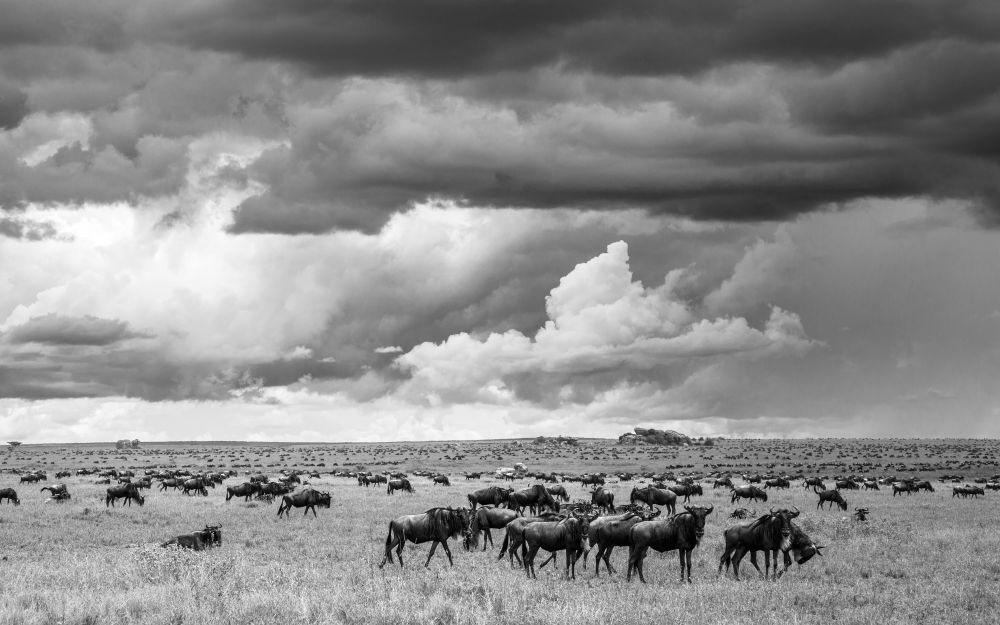
June 5, 2025 at 9:15 AM
9/ This paper is the result of over 7 years of work—a true collective effort. Huge thanks to all my co-authors for making this possible! @ohsanisidro.bsky.social @singerstone.bsky.social @amniotalab.bsky.social et al.
📸 @singerstone.bsky.social
📸 @singerstone.bsky.social
5/ This event also led to an acceleration in functional diversity increase. For the first time, all major herbivore orders—Proboscidea, Artiodactyla, and Perissodactyla—coexisted across continents, expanding ecological roles and reshaping ecosystems at a global scale.
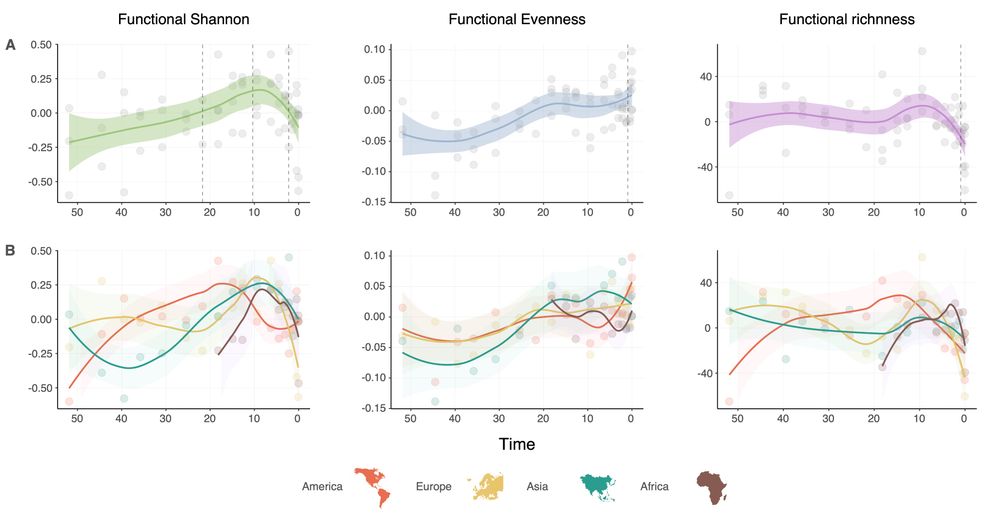
June 5, 2025 at 9:13 AM
5/ This event also led to an acceleration in functional diversity increase. For the first time, all major herbivore orders—Proboscidea, Artiodactyla, and Perissodactyla—coexisted across continents, expanding ecological roles and reshaping ecosystems at a global scale.
4/ 🌀First tipping point (~21 Ma):
Triggered by tectonics—Africa and Eurasia connected via the Gomphotherium land bridge.
This unleashed a wave of faunal migrations and global functional reorganization (Proboscideans out of Africa for the first time).
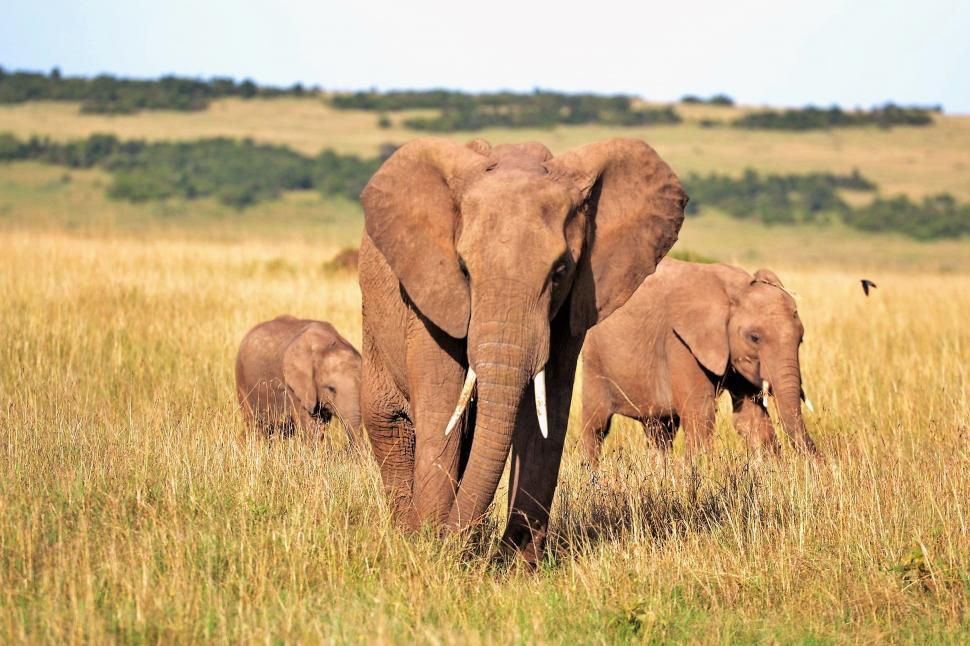
June 5, 2025 at 9:13 AM
4/ 🌀First tipping point (~21 Ma):
Triggered by tectonics—Africa and Eurasia connected via the Gomphotherium land bridge.
This unleashed a wave of faunal migrations and global functional reorganization (Proboscideans out of Africa for the first time).
3/ Across time, we found long phases of functional stability, where ecosystems retained their structure despite species turnover.
But we also found two major, irreversible tipping points in global herbivore faunas—moments of drastic ecological reassembly.
But we also found two major, irreversible tipping points in global herbivore faunas—moments of drastic ecological reassembly.
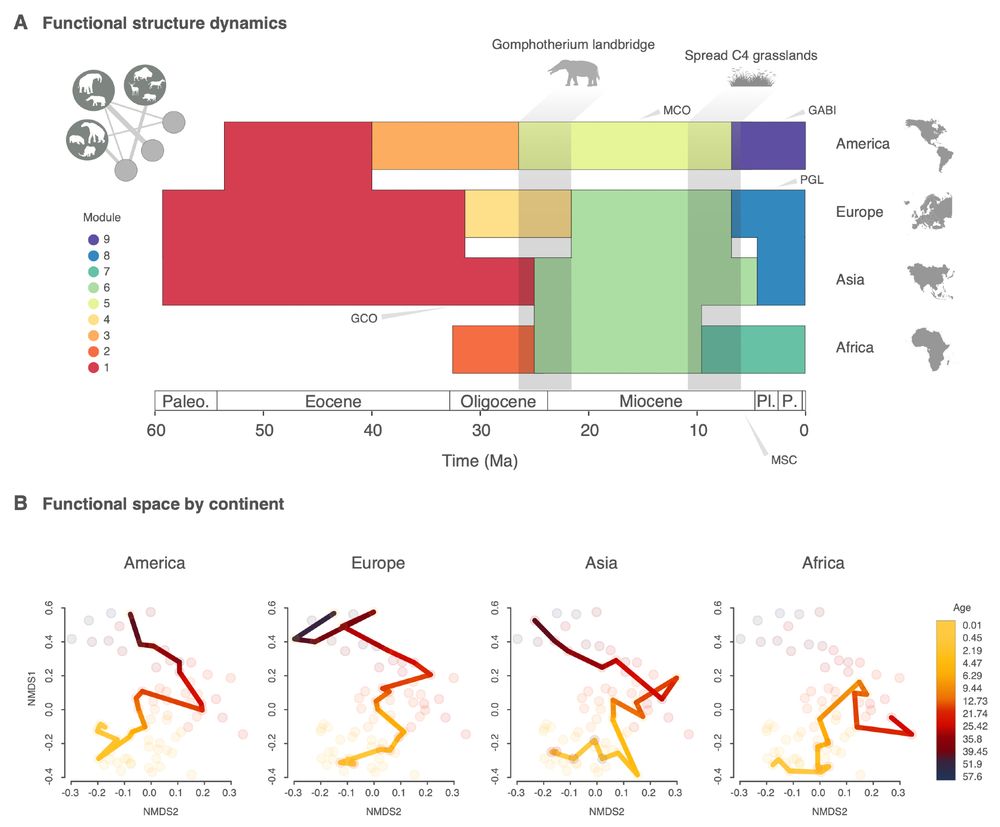
June 5, 2025 at 9:12 AM
3/ Across time, we found long phases of functional stability, where ecosystems retained their structure despite species turnover.
But we also found two major, irreversible tipping points in global herbivore faunas—moments of drastic ecological reassembly.
But we also found two major, irreversible tipping points in global herbivore faunas—moments of drastic ecological reassembly.
2/ We used network analysis and trait data (like body size & tooth shape) from 3,000+ species to reconstruct the functional structure of global ungulate ecosystems over the past 60 million years.
Rather than focusing on taxonomy, we asked: What ecological roles they played?
Rather than focusing on taxonomy, we asked: What ecological roles they played?
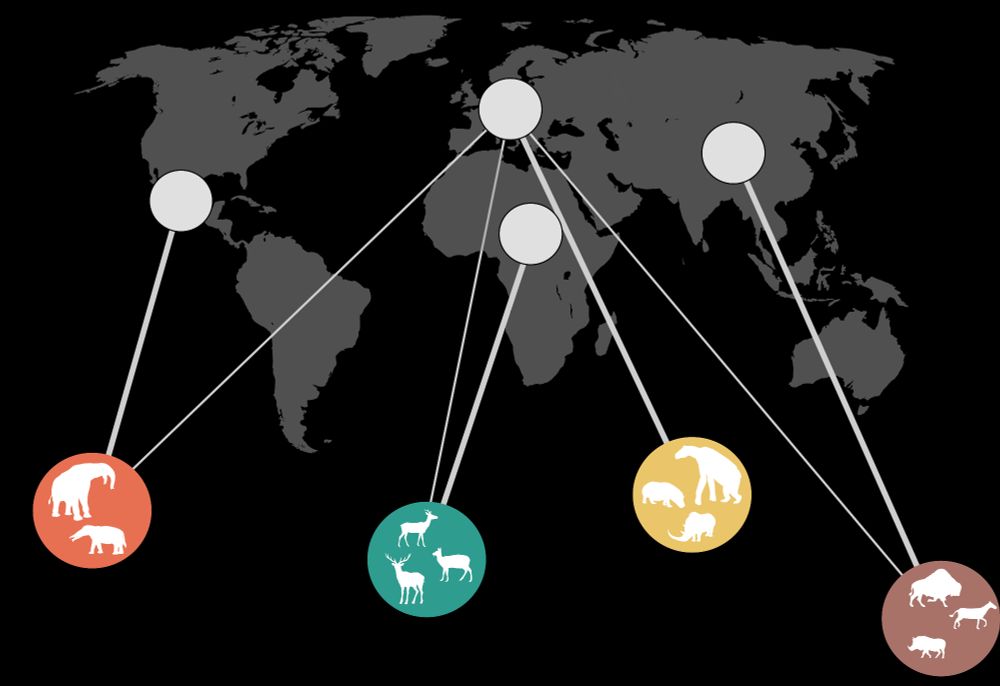
June 5, 2025 at 9:12 AM
2/ We used network analysis and trait data (like body size & tooth shape) from 3,000+ species to reconstruct the functional structure of global ungulate ecosystems over the past 60 million years.
Rather than focusing on taxonomy, we asked: What ecological roles they played?
Rather than focusing on taxonomy, we asked: What ecological roles they played?
1/ Large herbivores (like ancient elephants, rhinos, deer) aren’t just big plant-eaters—they’re ecosystem engineers. They shape landscapes, disperse seeds, and influence soil and fire dynamics.
But how did they evolve as climates and continents shifted?
📸 @singerstone.bsky.social
But how did they evolve as climates and continents shifted?
📸 @singerstone.bsky.social
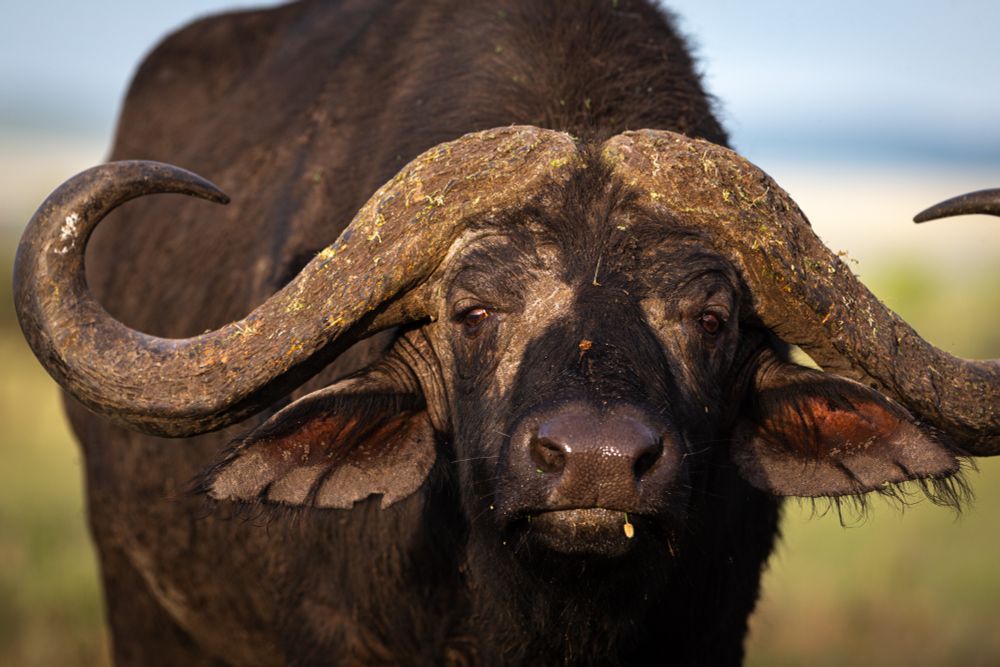
June 5, 2025 at 9:12 AM
1/ Large herbivores (like ancient elephants, rhinos, deer) aren’t just big plant-eaters—they’re ecosystem engineers. They shape landscapes, disperse seeds, and influence soil and fire dynamics.
But how did they evolve as climates and continents shifted?
📸 @singerstone.bsky.social
But how did they evolve as climates and continents shifted?
📸 @singerstone.bsky.social
I'm looking for a #Postdoc position ! 🧑🔬🔍
I'm a highly motivated researcher with experience in R programming, network analysis, and multivariate statistics. My focus is on the evolution of ecosystems and biodiversity over deep time. Any retweets or shares are greatly appreciated! 🙏
I'm a highly motivated researcher with experience in R programming, network analysis, and multivariate statistics. My focus is on the evolution of ecosystems and biodiversity over deep time. Any retweets or shares are greatly appreciated! 🙏

November 15, 2024 at 9:52 AM
I'm looking for a #Postdoc position ! 🧑🔬🔍
I'm a highly motivated researcher with experience in R programming, network analysis, and multivariate statistics. My focus is on the evolution of ecosystems and biodiversity over deep time. Any retweets or shares are greatly appreciated! 🙏
I'm a highly motivated researcher with experience in R programming, network analysis, and multivariate statistics. My focus is on the evolution of ecosystems and biodiversity over deep time. Any retweets or shares are greatly appreciated! 🙏

